People carry around a lot of romantic notions about Maine that aren’t necessarily so.
All of our from-away friends think we live right next to lighthouses, for example. They think we know Stephen King personally. And when we want lobster, we gather all our friends and family for a merry party at the beach, like the Maine version of a Target commercial, and throw a lobster bake over an open fire.
Yeah, right.
If only they knew that most modern lobster bakes are thrown by caterers in our own backyards, using metal steamers instead of stones and wood fires, and salt instead of seaweed layered between the lobster and the clams and the corn, to give the food smoky, briny touches of flavor.
No fire permits necessary.
Sandy Oliver, a food historian who lives on Isleboro, says she’s willing to bet that in every Maine coastal town there’s still two or three people who are known for throwing a lobster bake the old-fashioned way, but most people just don’t want to go to the trouble anymore.
“It’s very labor-intensive,” she said. “You’re hauling rocks, you’re hauling wood, and you have to go out and harvest seaweed and haul that to wherever it is you’re going to have this bake. You could have it in somebody’s field. It doesn’t have to be at the beach.”
Lexi Schaffer, who works at Foster’s Downeast Clambake in York Harbor, said the business has been getting a lot of calls this summer, for some reason, from people asking about traditional or open-pit lobster bakes right on the beach. When she tells callers they’re just a mile from the beach, they usually book anyway and have a good time.
“It’s been a little while since we’ve done one directly on the beach,” she said. “We do cater on the beach, but cooking with permits and everything, it’s become kind of difficult.”
If it’s the menu and not the venue that makes a Maine lobster bake authentic, most caterers offer a traditional version of the meal that includes lobster, clams, corn, potatoes and some kind of dessert — usually something with Maine blueberries.
Back in the day, a traditional one-pot lobster bake also included eggs. When the eggs were done, you knew the lobster was ready too. And at some point, people started throwing in hot dogs.
These days, you can get lots of extras that give the lobster bake a more modern twist.
“Everyone has their own opinion about how to do a lobster bake,” said Courtney MacIsaac, owner of the Maine LobsterBake Co., who caters a lot of corporate events, weddings and rehearsal dinners. “I have so many people that work with me, and everybody’s always trying to improve it and say ‘do it this way, do it that way.’ That’s what makes it fun.”
This year, she said, the trend has been for customers to ask for something very traditional. MacIsaac includes clam chowder on her menu, and customers can substitute Bangs Island mussels for clams. She also serves watermelon slices and a choice of strawberry shortcake or blueberry cake made from her mother’s recipe. She offers traditional cole slaw, but also a tomato cucumber dill salad and a kelp salad.
“This year, 97 percent of the people want clams,” MacIsaac said. “Not everybody eats the clams, either. Usually about 95 percent of the people at the party eat mussels, and only about 60 percent eat the clams.”
MacIsaac also offers lots of other add-ons, such as smoked seafood platters, cheese platters, shrimp with a green chili pesto, goat cheese roulades and caprese salad skewers.
This year, she’ll be making gazpacho for a wedding on Chebeague Island. That will go well with lobster, but it’s not exactly what the 19th-century rusticators ate at their seaside lobster bakes.
Most people trace the origin of New England lobster bakes back to native Americans, who then taught Old World settlers how to do it, but Oliver pretty much scoffs at that idea.
“Perhaps when the settlers got here they noticed that the Indians did something which all people around the whole world do, which is cook in the ground,” Oliver said. “People for millennia have heated rocks in a hole with a fire and put food next to them to cook it. It’s just something human beings do. It was a fairly self-conscious choice to do it this way in this country, and it starts happening in the 1700s.”
A century later, as New England settlers began looking to the past and celebrating their forefathers, they started holding shellfish feasts as a leisure-time activity on the beach. In southern New England, Oliver said, they were called “squantams” after Squanto, the Patuxet Indian who helped the Pilgrims survive their first winter in the New World.
“And you don’t wear your best clothes,” she said. “You bring bread and butter from home and whiskey in a jug, or maybe rum, and it’s a fun time and you do it the summertime. But you need a lot of leisure time to do this, and people weren’t taking a lot of vacations in the 1700s. Only the really prosperous could afford to go off on a vacation. Then you get into the 19th century, and more people are either entering professional classes, or they might be working in a factory but they get one day off a week.”
Lobster bakes of the time included lobster, corn and clams. Sometimes they were all-male events, Oliver said, but by the mid-1800s many of them included cakes and pies suplied by the ladies. This is also the time items such as eggs and potatoes were added to the meal.
Courtney MacIsaac grew up attending beach parties on Peaks Island that included cookouts over open fires, so she has a special appreciation for traditional technique. But she also knows what a hassle it is to deal with permits and keep an open cooking fire burning evenly.
“Technically, on Peaks Island you’re supposed to have a permit,” she said. “You just go to the fire station. It doesn’t cost anything.
“On the mainland, it’s a bit different. They’re not as laid-back about open fires, so it really depends on what town you go to. You’d have to check with your town office. Most places don’t want you to have an open fire.”
MacIsaac designed her own steamers so she can cook efficiently but still keep some of the traditions, including layering the food in the pot and using seaweed between the layers.
Lexi Schaffer of Foster’s Downeast Clambake said that company uses an onsite fire pit for its bakes. The meal is cooked over the fire in custom-made “bake boxes” with two-inches of water in the bottom. She said they used to use seaweed, but it has been hard to come by the past couple of years, so they stopped.
James Toennis, owner of Coastal Critters Clambake and Catering in Northport, doesn’t see the point in trying to stay traditional. He uses portable propane gas burners, doesn’t use seaweed, and cooks all the different parts of the meal separately.
“I can set it up in somebody’s driveway,” Toennis said. “I don’t have to dig a hole and start a big wood fire. I can come and go without making a big footprint. I don’t have to wait for any of the rocks to heat up or any of that stuff. When it’s time to start cooking, I just turn on the heat.”
He views the seaweed as just an added step. “Lobsters come right out of the salty water, you know. They already have enough sea juice in them, so to speak.”
Toennis said he cooks items separately so he won’t end up with undercooked potatoes and overcooked lobsters. He also doesn’t have to worry about people with shellfish allergies falling ill when they eat corn or potatoes cooked in the same pot as the lobster.
“There’s a certain amount of nostalgia to having a fire on the beach type of thing, but people only have so much patience,” Toennis said. “They might go over there and check it out, then they’ll go back to the tent or the bar or their lounge chair and mingle and chitchat. As it is, we cook with gas and we still get onlookers.”
Oliver notes that caterers understandably want to have a fair amount of control over the outcome of the meal, “and when you’re working with natural fire and rocks, unless you’ve done this a lot, you can get some variability in the outcome, and that makes people nervous.”
She also notes that cooking over an open fire gives everything a “seaweedy, smoky flavor” that many people like, but might be offputting to customers who aren’t expecting it.
Using modern technology, Oliver said, can make a lobster bake more economical and less labor-intensive.
“When labor was part of the recreation, it was different. There’s something about a New Englander that thinks that working hard is fun.”
Staff Writer Meredith Goad can be contacted at 791-6332 or at:
mgoad@pressherald.com
twitter: Meredith Goad
Send questions/comments to the editors.


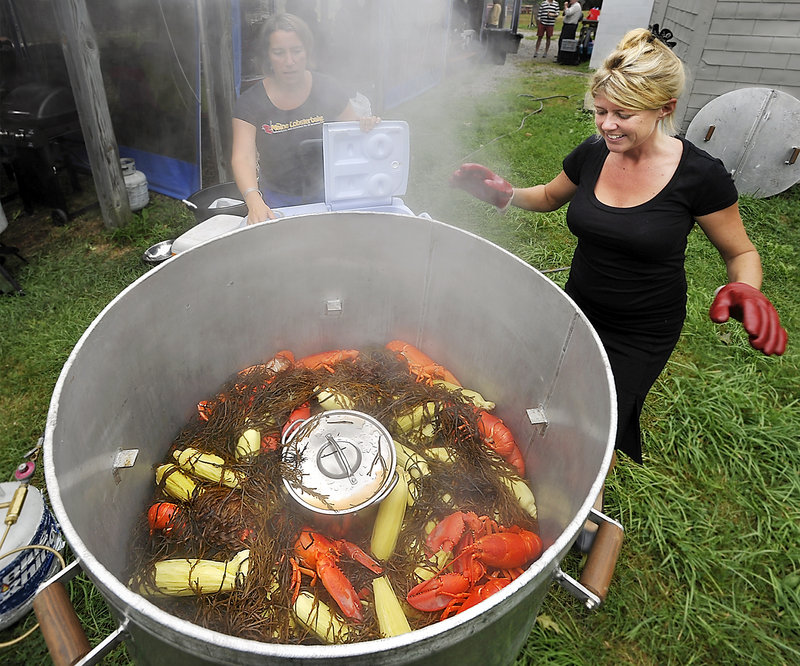
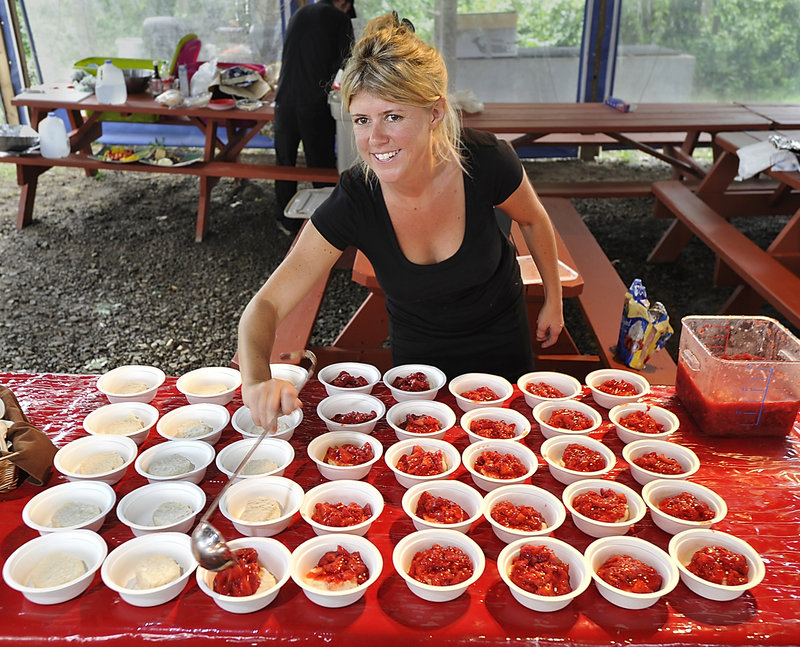
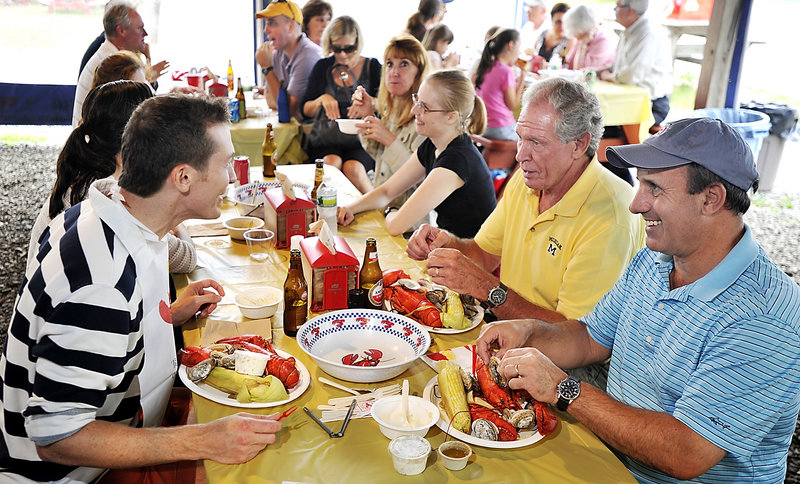
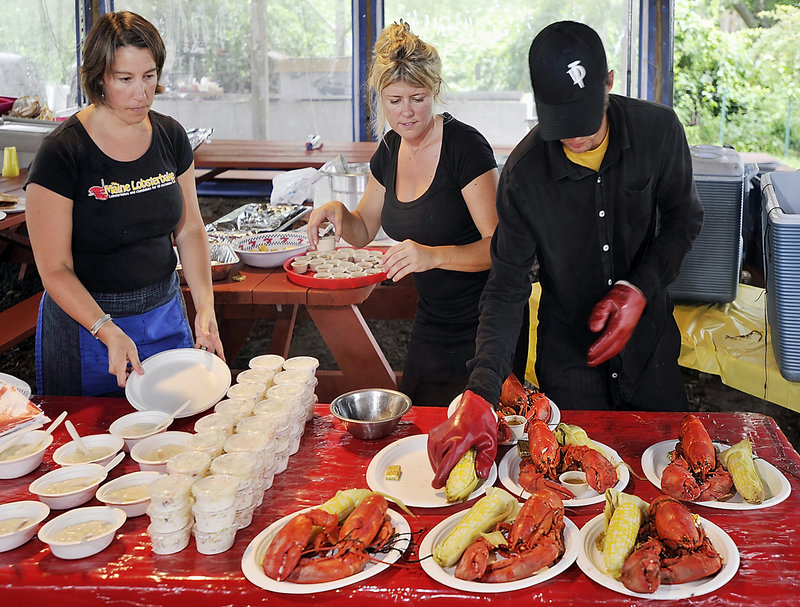
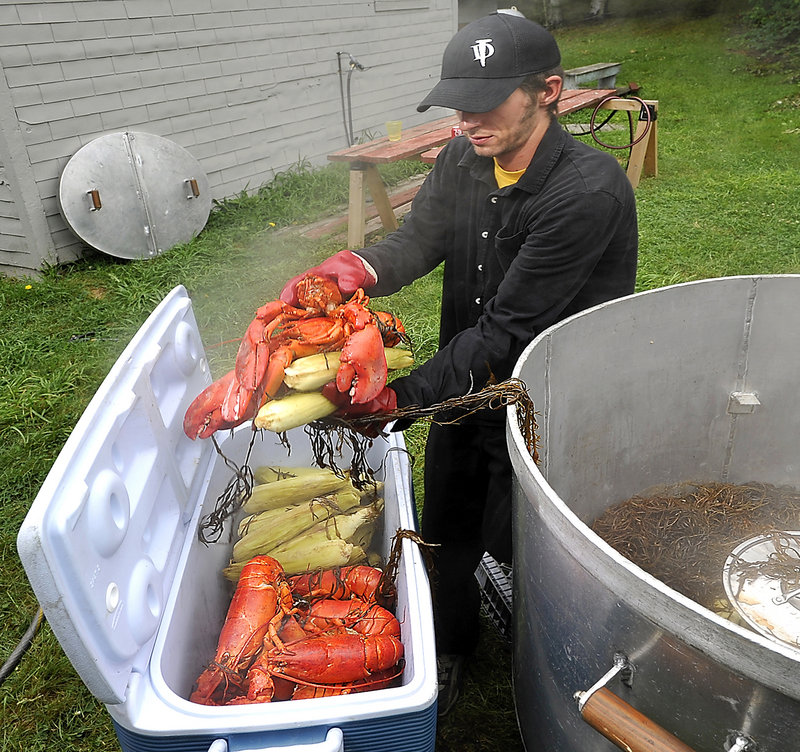
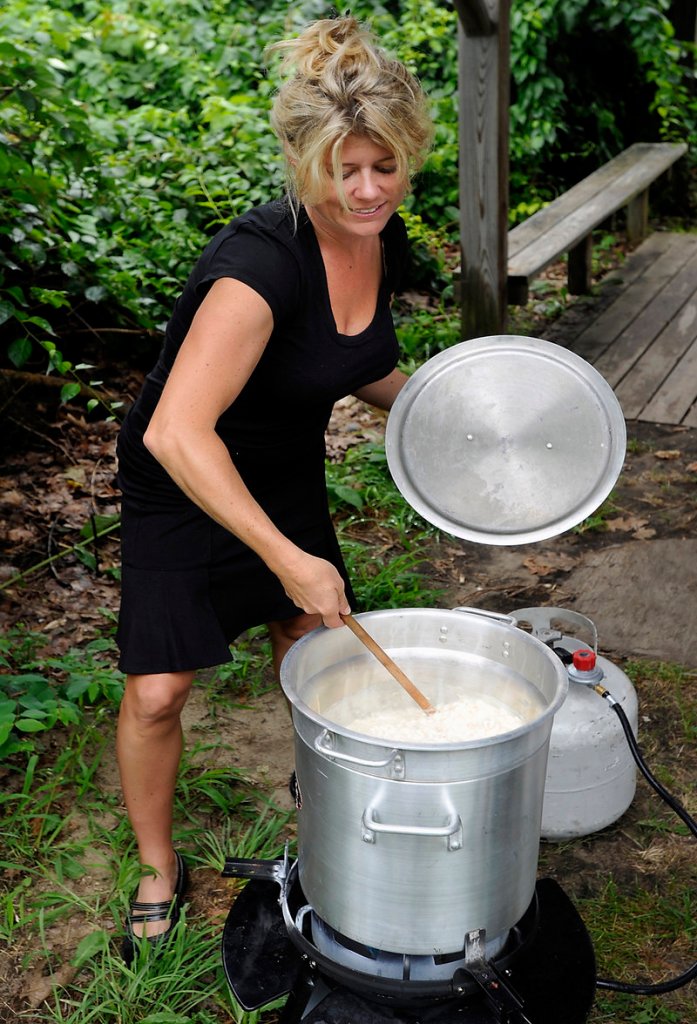

Success. Please wait for the page to reload. If the page does not reload within 5 seconds, please refresh the page.
Enter your email and password to access comments.
Hi, to comment on stories you must . This profile is in addition to your subscription and website login.
Already have a commenting profile? .
Invalid username/password.
Please check your email to confirm and complete your registration.
Only subscribers are eligible to post comments. Please subscribe or login first for digital access. Here’s why.
Use the form below to reset your password. When you've submitted your account email, we will send an email with a reset code.